Past Mayors of Nanaimo
Images courtesy of the Nanaimo Community Archives.
Most biographies courtesy of Jan Peterson “A Place in Time – Nanaimo Chronicles”, published by the Nanaimo Museum. Copies of the book can be purchased wholesale or retail at the Nanaimo Museum.
Past Mayors
-
Mark Bate (1875-79, 1881-86, 1888-89, 1898-1900)
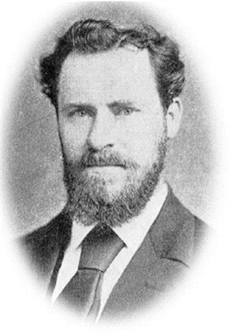 Mark Bate guided the city through its fledgling years and set it on the course for future development. He came to Nanaimo in 1857 and was immediately hired as a clerk for the Hudson’s Bay Company. While in England, his uncle George Robinson, who was in charge of the mines in Nanaimo, wrote to him about the discovery of gold on the Fraser River and told of how a French Canadian had brought gold dust to Nanaimo. He predicted that New Caledonia would become a second California. A year after his arrival in Nanaimo, Bate went to see the gold diggings for himself. He boarded the Surprise, and travelled as far as Fort Hope. The journey seemed to satisfy his appetite for adventure.
Mark Bate guided the city through its fledgling years and set it on the course for future development. He came to Nanaimo in 1857 and was immediately hired as a clerk for the Hudson’s Bay Company. While in England, his uncle George Robinson, who was in charge of the mines in Nanaimo, wrote to him about the discovery of gold on the Fraser River and told of how a French Canadian had brought gold dust to Nanaimo. He predicted that New Caledonia would become a second California. A year after his arrival in Nanaimo, Bate went to see the gold diggings for himself. He boarded the Surprise, and travelled as far as Fort Hope. The journey seemed to satisfy his appetite for adventure. Following the sale of the HBC Nanaimo interests to the Vancouver Coal Mining and Land Company in 1862, he became manager for the new company until 1869. When the company reorganized, adding “New” to its title, he held the position of office manager under superintendent Samuel Robins. In 1874 he was elected the city’s first mayor, and during this time he also served as Justice of the Peace. In 1886, he was appointed Nanaimo’s first government agent; he retired from this post in 1913.
Among Bate’s many accomplishments was the formation of the Nanaimo Literary Institute, a forerunner of the Nanaimo Library. In 1873 he was elected president and conductor of the Nanaimo Brass Band that became known as the Silver Cornet Band, then later the Nanaimo Concert Band. As well, he co-published the Gazette newspaper, and although the paper lasted only a few months, it whetted his appetite for writing that resulted in a number of historical essays on early Nanaimo. He wrote about the city, perhaps drawing inspiration from his homeland: “The coal city of Nanaimo has long been known as the ‘Newcastle of the Pacific Coast’ and now it aspires to be another Liverpool. Here coal is king.”
Bate was born in Birmingham, England, on December 11, 1837. He sailed from London in August 1856 on the Princess Royal with his aunt Maria Robinson, his sister Elizabeth and his cousin Cornelius Bryant. The group arrived in Nanaimo on February 1, 1857. Two years later, he married Sarah Ann Cartwright and fathered ten children. Cornelius Bryant became the schoolteacher in Nanaimo. His brother Thomas came to Nanaimo in 1888. Mark’s sister Elizabeth married Adam Grant Horne, and his sister Lucy, who arrived in 1862, married Peter Sabiston.
Image courtesy of Nanaimo Community Archives
Biography courtesy of Jan Peterson “A Place in Time – Nanaimo Chronicles” -
John Pawson (1880)
 Pawson built the Old Flag Inn near the Bastion Street Bridge in 1874. This same year, he was elected to the first council under Mark Bate. He also served on the first Nanaimo Hospital Association that formed in 1881, with Robert Dunsmuir as president. One of the wards was named the John Pawson Ward in his honour. Pawson was also president of the Union Brewing Company Limited.
Pawson built the Old Flag Inn near the Bastion Street Bridge in 1874. This same year, he was elected to the first council under Mark Bate. He also served on the first Nanaimo Hospital Association that formed in 1881, with Robert Dunsmuir as president. One of the wards was named the John Pawson Ward in his honour. Pawson was also president of the Union Brewing Company Limited.Image courtesy of Nanaimo Community Archives
Biography courtesy of Jan Peterson “A Place in Time – Nanaimo Chronicles” -
Richard Gibson (1887)
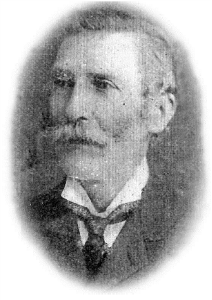 Gibson served as mayor for only one term. He was the owner of the Doon Hotel and the Gibson Block on Commercial Street. The tragic mine explosion in the No. 1 Mine at Esplanade on May 3, 1887, happened during his term as mayor. Fortunately he was not at work that day and survived, but was one of the volunteers to go down the mine to attempt the rescue of fellow trapped miners.
Gibson served as mayor for only one term. He was the owner of the Doon Hotel and the Gibson Block on Commercial Street. The tragic mine explosion in the No. 1 Mine at Esplanade on May 3, 1887, happened during his term as mayor. Fortunately he was not at work that day and survived, but was one of the volunteers to go down the mine to attempt the rescue of fellow trapped miners.When the Five Acres development leases were issued, he was the first to construct a home on Howard Avenue. He lived there with his family until the home was destroyed by fire in 1905. The family then moved into an apartment above the Gibson Block.
Gibson’s spirit of adventure led him to join other young Nanaimo men on their way to the Klondike gold rush.
Image courtesy of Nanaimo Community Archives
Biography courtesy of Jan Peterson “A Place in Time – Nanaimo Chronicles” -
John Hilbert (1890-91)
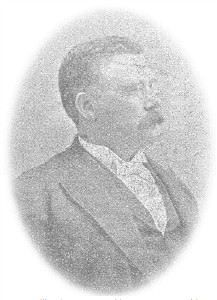 Hilbert was born in Hoxey, Lincolnshire, England, on July 29, 1845. He was a patternmaker in the firm Tanner, Walker & Company, employing 1100 men. He married Mary Jane Gilligan, and with several more years of his apprenticeship remaining, he and his wife left for New York City in 1873. They travelled to New York, then Chicago, but neither place suited them so they continued on to San Francisco where they boarded a steamer bound for Victoria. Their long adventurous journey ended in Nanaimo.
Hilbert was born in Hoxey, Lincolnshire, England, on July 29, 1845. He was a patternmaker in the firm Tanner, Walker & Company, employing 1100 men. He married Mary Jane Gilligan, and with several more years of his apprenticeship remaining, he and his wife left for New York City in 1873. They travelled to New York, then Chicago, but neither place suited them so they continued on to San Francisco where they boarded a steamer bound for Victoria. Their long adventurous journey ended in Nanaimo.At first the Hilberts rented a vacant building on Bastion Street and opened for business under the name Hilbert’s Home Furnishings. John built cupboards, tables, chairs, and other household furnishings. His skill earned him the contract to build the Methodist Church in North Wellington and the Crace Street schoolhouse. He also built a two-storey building on Bastion Street.
In 1879 the business was moved to larger premises, opposite Holden the blacksmith, and in 1886 Hilbert announced he was now making caskets to order. Hilbert’s Undertaking Parlour was established in 1890 in conjunction with his furniture and upholstery business. The undertaking business became more profitable than making furniture; considering the number of deaths in the mines, he decided to concentrate on it.
His son Albert apprenticed under his father, and when he was old enough took over the business, giving his father time to devote to his other love—civic affairs. John Hilbert was elected to council in 1878, elected mayor in 1890 and re-elected by acclamation in 1891. He was appointed magistrate and served on the bench for many years. He was president of the Board of Trade, a hospital trustee, a charter member of several fraternal organizations, and director of the Nanaimo Gas Works.His wife Mary opened a small confectionery store at Departure Bay on May 5, 1898, selling fruit, candy, and cigars during the summer months. When she died suddenly in 1913, John retired from the undertaking business, selling out to D.J. Jenkins Ltd. Albert continued with the new owners. John Hilbert died on July 24, 1926.
Image courtesy of Nanaimo Community Archives
Biography courtesy of Jan Peterson “A Place in Time – Nanaimo Chronicles” -
Andrew Haslam (1892-93)
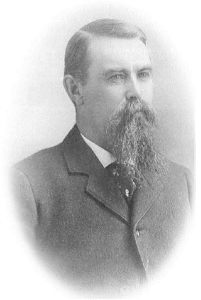 Haslam left Northern Ireland with his parents for Canada in 1861. They settled in New Brunswick. Andrew left there in 1870 and, for the next four years, worked in forestry in Winnipeg and Texas. In 1874, he worked for a short time for the Nanaimo Sawmill before moving to New Westminster where he invested in a successful box factory, sawmill, and sash-and-door factory. The company became known as the Royal City Planning Mills Ltd. During his time in New Westminster, he was elected to city council three times. The company purchased the Nanaimo Sawmill in 1885. A year later, Haslam bought it out and became the sole owner of the Nanaimo Saw & Planning Mill. In 1884, he married Eva Macdougal of New Brunswick, and the couple had three children: Charles, William and Ian.Haslam entered provincial politics following the death of Robert Dunsmuir in 1889. He was acclaimed to fill the Dunsmuir seat. A year later he filled another political seat following the death of MP David William Gordon. Haslam was re-elected in the federal 1893 election. He also served as Mayor of Nanaimo in 1892 and 1893.In 1904, his sawmill businesses prospered in Nanaimo, but his luck changed when two fires at the sawmill caused him to lose all of his Nanaimo properties including his home, Haslam Hall, at the corner of Comox and Wallace streets. He moved to Vancouver where he became the province’s first log-scale inspector.Image courtesy of Nanaimo Community Archives
Haslam left Northern Ireland with his parents for Canada in 1861. They settled in New Brunswick. Andrew left there in 1870 and, for the next four years, worked in forestry in Winnipeg and Texas. In 1874, he worked for a short time for the Nanaimo Sawmill before moving to New Westminster where he invested in a successful box factory, sawmill, and sash-and-door factory. The company became known as the Royal City Planning Mills Ltd. During his time in New Westminster, he was elected to city council three times. The company purchased the Nanaimo Sawmill in 1885. A year later, Haslam bought it out and became the sole owner of the Nanaimo Saw & Planning Mill. In 1884, he married Eva Macdougal of New Brunswick, and the couple had three children: Charles, William and Ian.Haslam entered provincial politics following the death of Robert Dunsmuir in 1889. He was acclaimed to fill the Dunsmuir seat. A year later he filled another political seat following the death of MP David William Gordon. Haslam was re-elected in the federal 1893 election. He also served as Mayor of Nanaimo in 1892 and 1893.In 1904, his sawmill businesses prospered in Nanaimo, but his luck changed when two fires at the sawmill caused him to lose all of his Nanaimo properties including his home, Haslam Hall, at the corner of Comox and Wallace streets. He moved to Vancouver where he became the province’s first log-scale inspector.Image courtesy of Nanaimo Community Archives
Biography courtesy of Jan Peterson “A Place in Time – Nanaimo Chronicles”
-
Edward Quennell (1894-95)
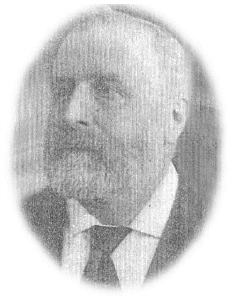 Quennell came to Nanaimo in 1864 and worked at various jobs in the mines and on steamboats before becoming a rancher and butcher. He also held the position of Nanaimo harbourmaster for eighteen years. On his 425-acre farm on the shores of Quennell Lake (which bears his name), in the Cedar area, he raised sheep and cattle. He had two retail shops in Nanaimo, employing twelve men. His butcher shop, Quennell & Sons, processed ham, bacon, and lard at the rear of the store.In 1870 he married Julie Wilcox and fathered three children. After Julie’s tragic death from typhoid fever, he remarried in 1875 to Maria Biggs, a daughter of pioneers John and Jane Biggs. He and Maria raised ten children.By 1900, Quennell had served two terms as mayor and four as alderman; as well he was chairman of the school board and president of the Union Brewing Company.Image courtesy of Nanaimo Community Archives
Quennell came to Nanaimo in 1864 and worked at various jobs in the mines and on steamboats before becoming a rancher and butcher. He also held the position of Nanaimo harbourmaster for eighteen years. On his 425-acre farm on the shores of Quennell Lake (which bears his name), in the Cedar area, he raised sheep and cattle. He had two retail shops in Nanaimo, employing twelve men. His butcher shop, Quennell & Sons, processed ham, bacon, and lard at the rear of the store.In 1870 he married Julie Wilcox and fathered three children. After Julie’s tragic death from typhoid fever, he remarried in 1875 to Maria Biggs, a daughter of pioneers John and Jane Biggs. He and Maria raised ten children.By 1900, Quennell had served two terms as mayor and four as alderman; as well he was chairman of the school board and president of the Union Brewing Company.Image courtesy of Nanaimo Community Archives
Biography courtesy of Jan Peterson “A Place in Time – Nanaimo Chronicles”
-
Joseph H. Davidson (1896-97)
Davidson served two terms as mayor, one during the troublesome year when the small police force was investigated for “unbecoming conduct” and illegal actions. In his second term, he requested a leave of absence and left for the Klondike with other Nanaimo miners, leaving Acting Mayor George Campbell in charge of city affairs.
No Photo AvailableBiography courtesy of Jan Peterson “A Place in Time – Nanaimo Chronicles” -
William R. Manson (1901-04)
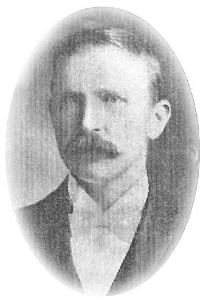 Manson was no stranger to municipal politics, having served under Mark Bate, the city’s first mayor. During his term in office, Western Fuel Company purchased the New Vancouver Coal Company, the city purchased the waterworks, and telephone communication was established with Victoria. Manson had made the first long-distance telephone call to Victoria’s Mayor Hayward in December 1901.William was one of the amazing Manson families that became known throughout B.C. The family came from the Shetland Islands, in Scotland. First to arrive was Michael in 1875; he built and operated Manson’s General Store at the corner of Haliburton and Farquhar streets. His brother Lawrence joined him in 1877 and eventually bought the store from Michael. Another brother, William, also worked in the store for a short time. Finally cousin William R. arrived, and it was he who became mayor.After leaving the mayor’s office, William directed his political aspirations towards provincial politics and joined other family members in Premier Richard McBride’s government. One political observer noted that at one time there were more Mansons (three in the House) than there were members of the opposition.Image courtesy of Nanaimo Community Archives
Manson was no stranger to municipal politics, having served under Mark Bate, the city’s first mayor. During his term in office, Western Fuel Company purchased the New Vancouver Coal Company, the city purchased the waterworks, and telephone communication was established with Victoria. Manson had made the first long-distance telephone call to Victoria’s Mayor Hayward in December 1901.William was one of the amazing Manson families that became known throughout B.C. The family came from the Shetland Islands, in Scotland. First to arrive was Michael in 1875; he built and operated Manson’s General Store at the corner of Haliburton and Farquhar streets. His brother Lawrence joined him in 1877 and eventually bought the store from Michael. Another brother, William, also worked in the store for a short time. Finally cousin William R. arrived, and it was he who became mayor.After leaving the mayor’s office, William directed his political aspirations towards provincial politics and joined other family members in Premier Richard McBride’s government. One political observer noted that at one time there were more Mansons (three in the House) than there were members of the opposition.Image courtesy of Nanaimo Community Archives
Biography courtesy of Jan Peterson “A Place in Time – Nanaimo Chronicles”
-
Albert E. Planta (1905-08; 1910-11; 1914-15)
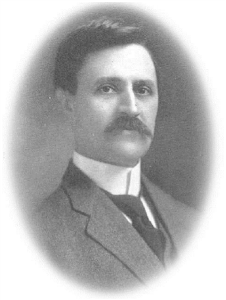 Australian born Planta came with his parents to Nanaimo in 1879. He was educated here and after leaving school, worked for a time with Dr. Cluness. Later he entered the insurance and real estate business. In 1911 he sold his interest in the business to Dominion Trust Company and became manager. Politically he was a Conservative.During his term as mayor, he welcomed Governor General Earl Grey and Lady Grey to the city. City improvements made at this time included the installation of the sewer system and paving of streets. He negotiated with Western Fuel Company to extend the waterfront along Front Street to Comox Road. He also served on the Nanaimo School Board, and in 1910 became president of the B.C. School Trustees Association. He also served as president of the Union of B.C. Municipalities for two years. Planta became Nanaimo’s first appointed senator in 1917.Image courtesy of Nanaimo Community Archives
Australian born Planta came with his parents to Nanaimo in 1879. He was educated here and after leaving school, worked for a time with Dr. Cluness. Later he entered the insurance and real estate business. In 1911 he sold his interest in the business to Dominion Trust Company and became manager. Politically he was a Conservative.During his term as mayor, he welcomed Governor General Earl Grey and Lady Grey to the city. City improvements made at this time included the installation of the sewer system and paving of streets. He negotiated with Western Fuel Company to extend the waterfront along Front Street to Comox Road. He also served on the Nanaimo School Board, and in 1910 became president of the B.C. School Trustees Association. He also served as president of the Union of B.C. Municipalities for two years. Planta became Nanaimo’s first appointed senator in 1917.Image courtesy of Nanaimo Community Archives
Biography courtesy of Jan Peterson “A Place in Time – Nanaimo Chronicles”
-
Thomas Hodgson (1909)
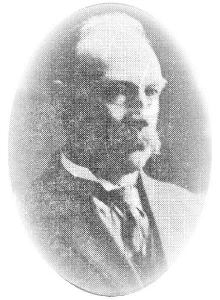 Hodgson was born in England. He learned the stonemason trade in Victoria before accepting a position with Alex Henderson’s Nanaimo Marble and Monumental Works in 1892. The job was physically demanding, and after several years he resigned to enter the general insurance and broker business.Hodgson was a founding member of the Agricultural Society in 1894. He is remembered for successfully negotiating a deal with the school board for the old agricultural hall that the society could no longer afford. The community needed another school, and the society had a building it could not manage. Without official approval he risked his career and on his own accord set aside $15,000 toward renovating the building thus eliminating a lot of red tape. The work was billed to the city. In the fall term of 1921, the old agricultural hall opened as an elementary school and was named the Thomas Hodgson Elementary School in his honour.Image courtesy of Nanaimo Community Archives
Hodgson was born in England. He learned the stonemason trade in Victoria before accepting a position with Alex Henderson’s Nanaimo Marble and Monumental Works in 1892. The job was physically demanding, and after several years he resigned to enter the general insurance and broker business.Hodgson was a founding member of the Agricultural Society in 1894. He is remembered for successfully negotiating a deal with the school board for the old agricultural hall that the society could no longer afford. The community needed another school, and the society had a building it could not manage. Without official approval he risked his career and on his own accord set aside $15,000 toward renovating the building thus eliminating a lot of red tape. The work was billed to the city. In the fall term of 1921, the old agricultural hall opened as an elementary school and was named the Thomas Hodgson Elementary School in his honour.Image courtesy of Nanaimo Community Archives
Biography courtesy of Jan Peterson “A Place in Time – Nanaimo Chronicles”
-
John Shaw (1912-13)
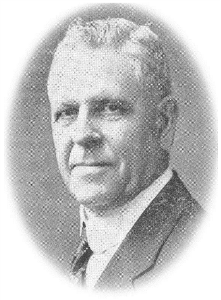 John Shaw’s term in office was a troubled time in Nanaimo’s history, with the full-blown Big Strike dominating the city agenda. Shaw asked the Attorney General William Bowser to send in the militia to keep the peace—they didn’t leave until the beginning of the First World War.
John Shaw’s term in office was a troubled time in Nanaimo’s history, with the full-blown Big Strike dominating the city agenda. Shaw asked the Attorney General William Bowser to send in the militia to keep the peace—they didn’t leave until the beginning of the First World War.Shaw was born in Manchester, England, in 1863 to Mr. and Mrs. Alexander Shaw. The family settled on Gabriola Island. In 1884, John became a teacher and was appointed principal of the Boy’s School; he later became the first principal of Central High School in 1896. He resigned that position in 1908 to join the Inland Revenue Board as a collector of revenue.
Shaw was a strong advocate for education, and served on the school board for twelve years. He was honoured in 1931 for fifty years of devotion to education in Nanaimo. Central High School was renamed the John Shaw High School in his honour.
Image courtesy of Nanaimo Community Archives
Biography courtesy of Jan Peterson “A Place in Time – Nanaimo Chronicles” -
Frederick A. Busby (1916; 1920-24; 1927-29)
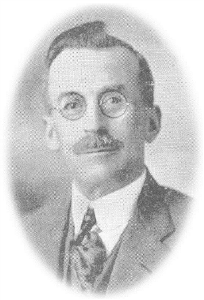 When the market crashed in 1929, Busby, at age fifty-seven, had already given much to the community through service as alderman, mayor, and school board member. He was born in Oakville, Ontario, and came to Nanaimo in 1892 after a few years of residence in New Westminster. Here he began working for Hemans & Walmsley, well-known pioneer butchers. He stayed with the company as manager after it was taken over by Pat Burns & Company in 1912. He retired in 1926 following doctor’s orders.He served on the school board for twenty-five years, two of those as chairman. He also served on the committee that built the new hospital.Image courtesy of Nanaimo Community Archives
When the market crashed in 1929, Busby, at age fifty-seven, had already given much to the community through service as alderman, mayor, and school board member. He was born in Oakville, Ontario, and came to Nanaimo in 1892 after a few years of residence in New Westminster. Here he began working for Hemans & Walmsley, well-known pioneer butchers. He stayed with the company as manager after it was taken over by Pat Burns & Company in 1912. He retired in 1926 following doctor’s orders.He served on the school board for twenty-five years, two of those as chairman. He also served on the committee that built the new hospital.Image courtesy of Nanaimo Community Archives
Biography courtesy of Jan Peterson “A Place in Time – Nanaimo Chronicles”
-
Henry McKenzie (1917-20)
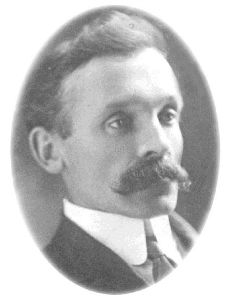 McKenzie was the first mayor to die in office. He served two terms as alderman before being elected mayor in 1917. He guided the community through the final days of the First World War and the Spanish influenza epidemic, and he witnessed the first airplane visit to Nanaimo in August 1919. In September of the same year, he welcomed the Prince of Wales, and in October hosted the Governor General of Canada and his wife, The Duke and Duchess of Devonshire. One of his last public duties was the official opening of the Nanaimo Public Library on the second floor of the Athletic Club, in January 1920. He died two months later. Frederick Busby then filled the mayor’s chair.
McKenzie was the first mayor to die in office. He served two terms as alderman before being elected mayor in 1917. He guided the community through the final days of the First World War and the Spanish influenza epidemic, and he witnessed the first airplane visit to Nanaimo in August 1919. In September of the same year, he welcomed the Prince of Wales, and in October hosted the Governor General of Canada and his wife, The Duke and Duchess of Devonshire. One of his last public duties was the official opening of the Nanaimo Public Library on the second floor of the Athletic Club, in January 1920. He died two months later. Frederick Busby then filled the mayor’s chair.Image courtesy of Nanaimo Community Archives
Biography courtesy of Jan Peterson “A Place in Time – Nanaimo Chronicles” -
Victor B. Harrison (1925-26; 1938-44)
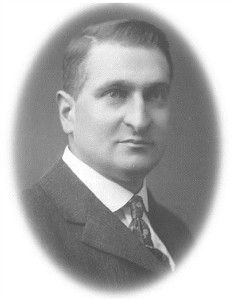 Victor Harrison carried the city through the Second World War years. He also served as Police Commissioner. Harrison was nominated as the Conservative candidate for the B.C. Legislature in 1920 and again in 1940, but was defeated both times. He received the Freedom of the City award in 1958.In 1923 Harrison outlined his thoughts on municipal government in an election bid for alderman. He wanted a businesslike approach to civic affairs and an efficient system of maintaining the roads. He questioned which government should maintain the trunk roads passing though the city, and he wanted a better waterworks system. Roads and water were always points of aggravation with Nanaimo taxpayers. He is credited with lobbying the federal government to have a military airstrip located near Nanaimo, and also to have wooden minesweepers built here.Harrison was born in Nanaimo in 1884. He was one of four sons of Judge Eli and Eunice Harrison, the first County Court judge appointed in Vancouver Island. All four boys entered the legal profession. Victor was called to the bar in 1908 and began his career in the law firm of Drake, Jackson and Helmcken, in Ladysmith. He served as stipendiary magistrate from 1909 to 1912, then moved to Nanaimo and became a partner in the law firm of Harrison & McIntyre.The young lawyer became a household word in Nanaimo during the trials of Brother Twelve when he acted on behalf of Mary Connally, a wealthy U.S. resident who had loaned money to the Aquarian Foundation. He also represented Nanaimo residents seeking legal title to their property under the Vancouver Island Settlers Rights Act. Harrison retired in the 1950s and died in 1971.
Victor Harrison carried the city through the Second World War years. He also served as Police Commissioner. Harrison was nominated as the Conservative candidate for the B.C. Legislature in 1920 and again in 1940, but was defeated both times. He received the Freedom of the City award in 1958.In 1923 Harrison outlined his thoughts on municipal government in an election bid for alderman. He wanted a businesslike approach to civic affairs and an efficient system of maintaining the roads. He questioned which government should maintain the trunk roads passing though the city, and he wanted a better waterworks system. Roads and water were always points of aggravation with Nanaimo taxpayers. He is credited with lobbying the federal government to have a military airstrip located near Nanaimo, and also to have wooden minesweepers built here.Harrison was born in Nanaimo in 1884. He was one of four sons of Judge Eli and Eunice Harrison, the first County Court judge appointed in Vancouver Island. All four boys entered the legal profession. Victor was called to the bar in 1908 and began his career in the law firm of Drake, Jackson and Helmcken, in Ladysmith. He served as stipendiary magistrate from 1909 to 1912, then moved to Nanaimo and became a partner in the law firm of Harrison & McIntyre.The young lawyer became a household word in Nanaimo during the trials of Brother Twelve when he acted on behalf of Mary Connally, a wealthy U.S. resident who had loaned money to the Aquarian Foundation. He also represented Nanaimo residents seeking legal title to their property under the Vancouver Island Settlers Rights Act. Harrison retired in the 1950s and died in 1971.
Image courtesy of Nanaimo Community Archives
Biography courtesy of Jan Peterson “A Place in Time – Nanaimo Chronicles” -
George A.B. Hall, M.D. (1930-31)
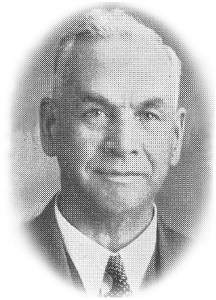 Dr. George Hall was mayor during the first two years of the Great Depression. In 1931, he met with federal ministers and other mayors to discuss unemployment in the west. Perhaps one of his more pleasant tasks during his term in office was to officially open the Newcastle Island Resort in 1931.Hall was born in Ontario and graduated in dentistry from the Philadelphia Dental College. He was Nanaimo’s first resident dentist. After practicing for two years, he opened the Crescent Pharmacy. A year later he sold his dental practice to his cousin Dr. W.C. Mason and then completed his medical training at Stanford University, graduating in medicine and surgery.His first practice was in Nelson; he was superintendent of the Kootenay Lake General Hospital for three years. He then moved to Victoria as Medical Health Officer. Following three years of service in the First World War, he answered an advertisement for a Western Fuel Company physician, and this brought him back to Nanaimo.He opened his own practice in the Hall Clinic that he established in 1936 with his sons Earle and Alan, and Dr. A.E. Manson. The clinic was at 43 Commercial Street, in the Hall Block. He retired to Victoria.Image courtesy of Nanaimo Community Archives
Dr. George Hall was mayor during the first two years of the Great Depression. In 1931, he met with federal ministers and other mayors to discuss unemployment in the west. Perhaps one of his more pleasant tasks during his term in office was to officially open the Newcastle Island Resort in 1931.Hall was born in Ontario and graduated in dentistry from the Philadelphia Dental College. He was Nanaimo’s first resident dentist. After practicing for two years, he opened the Crescent Pharmacy. A year later he sold his dental practice to his cousin Dr. W.C. Mason and then completed his medical training at Stanford University, graduating in medicine and surgery.His first practice was in Nelson; he was superintendent of the Kootenay Lake General Hospital for three years. He then moved to Victoria as Medical Health Officer. Following three years of service in the First World War, he answered an advertisement for a Western Fuel Company physician, and this brought him back to Nanaimo.He opened his own practice in the Hall Clinic that he established in 1936 with his sons Earle and Alan, and Dr. A.E. Manson. The clinic was at 43 Commercial Street, in the Hall Block. He retired to Victoria.Image courtesy of Nanaimo Community Archives
Biography courtesy of Jan Peterson “A Place in Time – Nanaimo Chronicles”
-
John Barsby (1932-37)
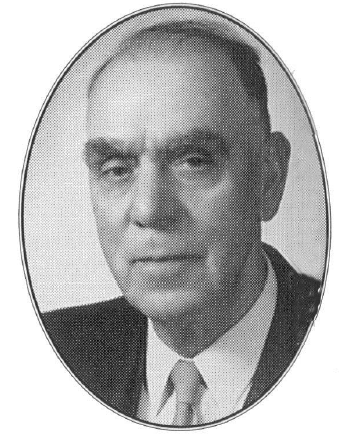 John (Jack) Barsby was a plasterer by trade, and to his credit he led the City of Nanaimo through some of the most difficult years since its incorporation. He was born in Derbyshire, England, in 1883, one in a family of thirteen children. At age twenty-four, he immigrated to Canada and worked for a short time in the coal mines of Nova Scotia, then moved to Fernie, B.C., before finally settling in Nanaimo and establishing a plastering business here.During the early history of the Upper Island Music Festival, Barsby served as president. He sang in its competitions and was often a prizewinner. In later years when the festival hit a low point, Barsby helped revive it.Barsby was an all-around good citizen of Nanaimo. His list of accomplishments is long, especially in relationship to education, serving first as school trustee then at various times as chairman of the board. Each election he was returned to office. His interest in education extended provincially through the B.C. School Trustees Association where he was elected first vice-president in 1941 then president in 1942, eventually being honoured with a life membership in that association when he retired in 1950. John Barsby Junior High School, which opened in 1956, was named in his honour in recognition of his service to education at the local, provincial and national levels.In Barsby’s spare time, if he had any, he loved sports, and he won a gold medal for trap shooting and another in football. He enjoyed the outdoors, hunting and fishing, and was an active member of the Nanaimo Fish and Game Club. For all these accomplishments, the City of Nanaimo honoured him as a Freeman of the City.Image courtesy of Nanaimo Community Archives
John (Jack) Barsby was a plasterer by trade, and to his credit he led the City of Nanaimo through some of the most difficult years since its incorporation. He was born in Derbyshire, England, in 1883, one in a family of thirteen children. At age twenty-four, he immigrated to Canada and worked for a short time in the coal mines of Nova Scotia, then moved to Fernie, B.C., before finally settling in Nanaimo and establishing a plastering business here.During the early history of the Upper Island Music Festival, Barsby served as president. He sang in its competitions and was often a prizewinner. In later years when the festival hit a low point, Barsby helped revive it.Barsby was an all-around good citizen of Nanaimo. His list of accomplishments is long, especially in relationship to education, serving first as school trustee then at various times as chairman of the board. Each election he was returned to office. His interest in education extended provincially through the B.C. School Trustees Association where he was elected first vice-president in 1941 then president in 1942, eventually being honoured with a life membership in that association when he retired in 1950. John Barsby Junior High School, which opened in 1956, was named in his honour in recognition of his service to education at the local, provincial and national levels.In Barsby’s spare time, if he had any, he loved sports, and he won a gold medal for trap shooting and another in football. He enjoyed the outdoors, hunting and fishing, and was an active member of the Nanaimo Fish and Game Club. For all these accomplishments, the City of Nanaimo honoured him as a Freeman of the City.Image courtesy of Nanaimo Community Archives
Biography courtesy of Jan Peterson “A Place in Time – Nanaimo Chronicles”
-
George Muir (1945-49; 1953-55)
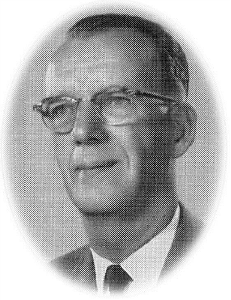 Scottish by birth, Muir was a veteran of the First World War. In his business life, he was an agent for the Metropolitan Life Insurance Company. He had served thirteen years as alderman (1933-1945) before becoming mayor. He was also a member of School District 68 board of trustees and was a member of the B.C. Municipalities executive for four years. He enjoyed boating and took part in the International Cruiser race. In 1949, he was a member of the crew of the famous Eileen that won the Capital to Capital race from Olympia, Washington, to Juneau, Alaska, the only Canadian ship in the race.Muir was one of the original members of the Nanaimo Harbour Commission when it was formed in 1961 and became its second chairman. He also served a term as president of the Canadian Port and Harbour Association. He was active in a number of associations and organizations including the Rotary Club and the Royal Canadian Legion No. 10.Image courtesy of Nanaimo Community Archives
Scottish by birth, Muir was a veteran of the First World War. In his business life, he was an agent for the Metropolitan Life Insurance Company. He had served thirteen years as alderman (1933-1945) before becoming mayor. He was also a member of School District 68 board of trustees and was a member of the B.C. Municipalities executive for four years. He enjoyed boating and took part in the International Cruiser race. In 1949, he was a member of the crew of the famous Eileen that won the Capital to Capital race from Olympia, Washington, to Juneau, Alaska, the only Canadian ship in the race.Muir was one of the original members of the Nanaimo Harbour Commission when it was formed in 1961 and became its second chairman. He also served a term as president of the Canadian Port and Harbour Association. He was active in a number of associations and organizations including the Rotary Club and the Royal Canadian Legion No. 10.Image courtesy of Nanaimo Community Archives
Biography courtesy of Jan Peterson “A Place in Time – Nanaimo Chronicles”
-
Earle C. Westwood (1950-52; 1956)
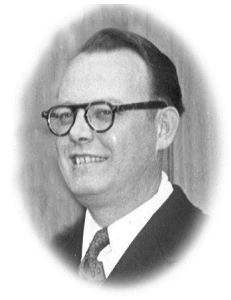 Earle C. Westwood’s family dates back to 1860 in Nanaimo when his great-grandparents arrived in Victoria on the steamship Pacific. His father was Joseph Arthur Henry Westwood, son of William Joseph Westwood, who left England in 1849 for St. Louis, U.S.A., then followed the gold rush to California in 1853. In 1864, he opened up a blacksmith shop in Nanaimo and acquired a 2,000-acre farm. Westwood Lake is named for the family.Earle was born in Nanaimo in 1909. His marriage to Dorothy Planta produced two children: Brenton Earle and Susan Mary. He operated Westwood Funeral Home, and in his spare time was devoted to civic affairs and education. He was also active in the Rotary Club, Nanaimo Yacht Club, the Chamber of Commerce, Pioneer Association, Native Sons Post No. #3, Doric Lodge, Loyal Order of the Moose, and the Canadian Red Cross.He was elected Social Credit MLA in 1956 and was appointed to cabinet as Minister of Trade and Industry, and in 1958 he became Minister of Recreation and Conservation. He was appointed Agent General for B.C. at British Columbia House in London, England.On November 3, 1958, Westwood and mayors Barsby, Harrison and Muir were honoured with the Freedom of the City award.Image courtesy of Nanaimo Community Archives
Earle C. Westwood’s family dates back to 1860 in Nanaimo when his great-grandparents arrived in Victoria on the steamship Pacific. His father was Joseph Arthur Henry Westwood, son of William Joseph Westwood, who left England in 1849 for St. Louis, U.S.A., then followed the gold rush to California in 1853. In 1864, he opened up a blacksmith shop in Nanaimo and acquired a 2,000-acre farm. Westwood Lake is named for the family.Earle was born in Nanaimo in 1909. His marriage to Dorothy Planta produced two children: Brenton Earle and Susan Mary. He operated Westwood Funeral Home, and in his spare time was devoted to civic affairs and education. He was also active in the Rotary Club, Nanaimo Yacht Club, the Chamber of Commerce, Pioneer Association, Native Sons Post No. #3, Doric Lodge, Loyal Order of the Moose, and the Canadian Red Cross.He was elected Social Credit MLA in 1956 and was appointed to cabinet as Minister of Trade and Industry, and in 1958 he became Minister of Recreation and Conservation. He was appointed Agent General for B.C. at British Columbia House in London, England.On November 3, 1958, Westwood and mayors Barsby, Harrison and Muir were honoured with the Freedom of the City award.Image courtesy of Nanaimo Community Archives
Biography courtesy of Jan Peterson “A Place in Time – Nanaimo Chronicles”
-
Peter Maffeo (1957-67)
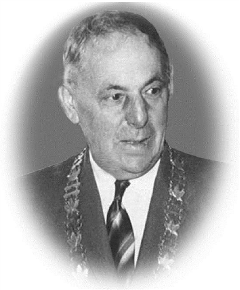 Throughout this period in the history of Nanaimo, from 1920 to 1967, Peter Maffeo’s service to the community stands out. His friends called him Pete. He operated the Davenport Ice and Ice Cream plant on the property on Machleary Street where he was born. With his wife Vera by his side, he turned his free hours into community service. The citizens of Nanaimo recognized they had a good and dedicated representative when they elected him mayor in 1957, and again and again until 1966, even though he had come to the job without council experience.
Throughout this period in the history of Nanaimo, from 1920 to 1967, Peter Maffeo’s service to the community stands out. His friends called him Pete. He operated the Davenport Ice and Ice Cream plant on the property on Machleary Street where he was born. With his wife Vera by his side, he turned his free hours into community service. The citizens of Nanaimo recognized they had a good and dedicated representative when they elected him mayor in 1957, and again and again until 1966, even though he had come to the job without council experience.
After completing his war service with the Sixth Field Canadian Engineers, during which time he was an athletic instructor, he carried on with athletics in Nanaimo. He joined the Gyro Club in 1922 and helped in the campaign to build the Franklyn Street Gymnasium and establish the Gyro playgrounds. He was also a member of the Masonic Lodge #18 and the Native Sons Post #3.Maffeo was one of twenty-six directors and businessmen who built the Hotel Malaspina, and in 1938 he headed up the Gyro Committee to sell bonds to help build the Civic Arena. He was called on again during the Second World War to take charge of the Civil Defence organization, and for his efforts he received the order of the British Empire, OBE, from His Majesty King George VI. He also campaigned vigorously for War Saving Certificates, Canadian Red Cross drives and Red Shield drives, and he fully supported the community Empire Days celebration.
Racism and prejudice were two words not in the vocabulary of Pete Maffeo. When the Harlem Globetrotters basketball team first arrived in Nanaimo in a battered old Model A Ford Car and were refused accommodation at the Hotel Malaspina because of their colour, Pete Maffeo stepped forward and offered accommodation and a spaghetti dinner. Three decades later the team honoured him with a silver award. He similarly welcomed Paul Robeson to Nanaimo, topping off his visit with a spaghetti dinner.
These were only a few of his activities before he became mayor. Afterwards, from 1957-1966, his name appears time and time again as he fulfilled his civic duties. When interviewed by William Barraclough on November 29, 1963, he talked about some of the interesting people he had met and said how proud he was of the guest book at city hall. His highlights included the visit of Princess Elizabeth and Prince Philip in 1951 and the opening of the new city hall, the visit of Princess Mary in 1955 when she signed the city guest book, and the visit of Princess Margaret in 1958 during the B.C. Centennial celebrations. He also met the Lord Mayor of London, Sir Denys Colquhoun Flowerdew Lowson, on September 2. The following year, Queen Elizabeth and Prince Philip made a return visit to the city.The end of Maffeo’s public life came suddenly and shocked those who had worked with him over the years in various community projects. A fall during a curling game in Courtenay, on March 27 1966, caused severe head injuries. A year later on December 7, 1967, at a dinner in the Tally-Ho Hotel, 185 citizens paid a special tribute to him for his outstanding public service to Nanaimo over the years. On January 9, 1968, Maffeo was named Freeman of the City. He died on June 7, 1968, at age seventy-two.
Image courtesy of Nanaimo Community Archives
Biography courtesy of Jan Peterson “A Place in Time – Nanaimo Chronicles” -
Frank J. Ney (1968-84; 1986-90)
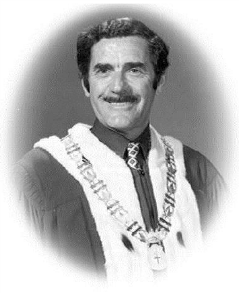 Ney was born in London, England, on May 12, 1918. He was a pilot during the Second World War, serving both in the RAF and the RCAF. He came to Nanaimo in 1946, and began work in real estate with the Nanaimo Realty Company. In 1959, that company purchased Protection Island for $130,000 and subdivided it into 344 lots.
Ney was born in London, England, on May 12, 1918. He was a pilot during the Second World War, serving both in the RAF and the RCAF. He came to Nanaimo in 1946, and began work in real estate with the Nanaimo Realty Company. In 1959, that company purchased Protection Island for $130,000 and subdivided it into 344 lots.In 1963 he founded the Great National Land and Investment Corporation as a public company. The company immediately purchased Nanaimo Realty Ltd. By 1965, Great National was catering to every niche in the local market: residential, commercial, industrial, revenue, and waterfront.
Ney was first elected mayor on December 9, 1967. He said at that time, one of his first priorities would be to proceed with “Operation Blacktop,” a paving program he planned for city’s streets. For the next seventeen years he never looked back, until November 1984 when Graeme Roberts defeated him. Two years later, he was back in the mayor’s chair and remained mayor until defeated by Joy Leach in 1990.
After his election as mayor, he began promoting the city, and when it needed increased publicity he provided it in abundance. Although the idea for the great bathtub race came from Glen Galloway, it was Ney who championed it and took it as his own, promoting it far and wide. Nanaimo residents remember the not unusual sight of “Black Frank: dressed up in his pirate costume, riding six-foot-high waves and a heavy chop in the bow of his boat, encouraging other tubers to give it their all. He was the first chairman and admiral of the Loyal Nanaimo Bathtub Society, established in 1968 to continue the bathtub race as an annual event.
With all the duties he had on his plate as mayor, it was not enough and he threw his hat into provincial politics, running for the Social Credit Party. He defeated MLA Dave Stupich in the 1969 election, and remained as mayor and MLA until defeated by Stupich in 1972.
The year before, on November 23, 1971, he hosted Governor General Roland Michener. This was the first official visit by a governor general in forty years. However, Ney considered one of the most memorable visits from a dignitary was in 1983 when he hosted Queen Elizabeth and Prince Philip during a visit to Nanaimo. He was made Freeman of the City in 1984.
Ney died on November 24, 1992, following a long battle with a cancerous brain tumour. He was seventy-four years old and survived by eleven children and his wife Joyce MacMillan.
Image courtesy of Nanaimo Community Archives
Biography courtesy of Jan Peterson “A Place in Time – Nanaimo Chronicles” -
Graeme Roberts (1985-86)
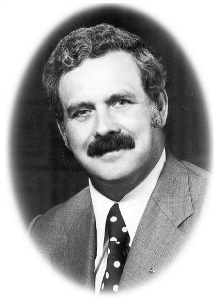 Graeme Roberts was a giant-killer when he beat the sitting mayor, Frank Ney, in the 1984 election. Ney had been mayor for sixteen years and was very popular indeed, especially when he donned his pirate costume for the annual bathtub race. Roberts was co-owner of Nanaimo Honda Cars and co-owner of C & R Motors. He originally sought the mayoralty because he said that he and others in the community were concerned city hall wasn’t being run properly. Acknowledging that Ney was wonderful at what he did, he felt that people wanted someone who would take the job more seriously.A bone of contention between the two men was over the slogan for the city. Ney wanted it to be “Hub City” while Roberts thought it should be “Harbour City.” Roberts reasoned that everyone already knew Nanaimo was the transportation hub of the Island; he thought the city needed something unique. The day Nanaimo was declared the Harbour City was one of his proudest moments as mayor. The occasion was the visit of Prince Charles and Princess Diana when the royal couple unveiled the “Harbour City” plaque and cairn. Roberts welcomed them and presented them with a hand-carved Native mask.Robert’s two years in office were heady times in Nanaimo as the face of the waterfront changed through development. The revitalization of the downtown, begun in 1981 under Frank Ney, was completed in 1985. The lagoon park opened on the waterfront as did the Seaplane Terminal, and construction began on the Bastion Hotel. The city was moving forward.Ney and Roberts locked horns again in the 1986 election, with Ney winning the battle this time around. Roberts was reflective in defeat. While he loved his time as mayor, he decided he was not a politician.Roberts grew up in Victoria and returned there in retirement, but still visits Nanaimo. He is proud of the small part he played in the city’s colourful history. He may be retired but he still keeps active. His wife is a professional artist and he helps market her work. He is also a member of the board of Air Canada, and he performs the occasional acting role in television series and in commercials.Image courtesy of Nanaimo Community Archives
Graeme Roberts was a giant-killer when he beat the sitting mayor, Frank Ney, in the 1984 election. Ney had been mayor for sixteen years and was very popular indeed, especially when he donned his pirate costume for the annual bathtub race. Roberts was co-owner of Nanaimo Honda Cars and co-owner of C & R Motors. He originally sought the mayoralty because he said that he and others in the community were concerned city hall wasn’t being run properly. Acknowledging that Ney was wonderful at what he did, he felt that people wanted someone who would take the job more seriously.A bone of contention between the two men was over the slogan for the city. Ney wanted it to be “Hub City” while Roberts thought it should be “Harbour City.” Roberts reasoned that everyone already knew Nanaimo was the transportation hub of the Island; he thought the city needed something unique. The day Nanaimo was declared the Harbour City was one of his proudest moments as mayor. The occasion was the visit of Prince Charles and Princess Diana when the royal couple unveiled the “Harbour City” plaque and cairn. Roberts welcomed them and presented them with a hand-carved Native mask.Robert’s two years in office were heady times in Nanaimo as the face of the waterfront changed through development. The revitalization of the downtown, begun in 1981 under Frank Ney, was completed in 1985. The lagoon park opened on the waterfront as did the Seaplane Terminal, and construction began on the Bastion Hotel. The city was moving forward.Ney and Roberts locked horns again in the 1986 election, with Ney winning the battle this time around. Roberts was reflective in defeat. While he loved his time as mayor, he decided he was not a politician.Roberts grew up in Victoria and returned there in retirement, but still visits Nanaimo. He is proud of the small part he played in the city’s colourful history. He may be retired but he still keeps active. His wife is a professional artist and he helps market her work. He is also a member of the board of Air Canada, and he performs the occasional acting role in television series and in commercials.Image courtesy of Nanaimo Community Archives
Biography courtesy of Jan Peterson “A Place in Time – Nanaimo Chronicles”
-
Joy E. Leach (1990-93)
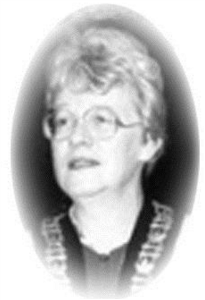 Joy Leach was the first female mayor of Nanaimo. She came to the position after a long service record as a school trustee. She was the third generation in her family to serve on a school board in the mid-Island region. Her grandfather, Sam Bond, was a school trustee in Hilliers in the 1920s, and her father was a trustee in Parksville in the late 1940s, in the newly created School District 69. She became a trustee in Nanaimo, School District 68, in 1974 and served ten years. She was also president of the B.C. School Trustees Association.Leach approached the mayor’s position as if she were the Chief Executive Officer of a publicly held corporation, always mindful of the stakeholders getting the greatest return for their investment dollars. She said, “The city is a partnership between the taxpayers, the council, and the administrative staff. We all need to strive to make that partnership work.”Aside from representing the city on committees such as finance, safety, the airport commission, and many others, she was the key player in the “Imagine Nanaimo” process, later known as “Plan Nanaimo.” This was a dramatic development plan as the city continued to grow. Imagine Nanaimo gave citizens a chance to have some input into the development of their city—where growth should be contained, or where big-box retail outlets should be constructed. “Pay as you go” might have been her motto, for she did not believe in borrowing from the future.She praised community initiatives such as the Nanaimo Lions Great Bridge sea wall using no taxpayer money but providing an asset to the community. It was Leach who came up with the idea for the name Parkway and the idea to have a trail run alongside the highway.Leach was the chair of the B.C. Round Table on the Environment and the Economy, an international group that helped shape the future of the Georgia Basin region. She was also on the task force looking into the future of the B.C. Ferry Corporation’s operations on Vancouver Island. In 1994, she was appointed chair of the B.C. Public Service Appeals Board and had the office relocated from Victoria to Nanaimo.
Joy Leach was the first female mayor of Nanaimo. She came to the position after a long service record as a school trustee. She was the third generation in her family to serve on a school board in the mid-Island region. Her grandfather, Sam Bond, was a school trustee in Hilliers in the 1920s, and her father was a trustee in Parksville in the late 1940s, in the newly created School District 69. She became a trustee in Nanaimo, School District 68, in 1974 and served ten years. She was also president of the B.C. School Trustees Association.Leach approached the mayor’s position as if she were the Chief Executive Officer of a publicly held corporation, always mindful of the stakeholders getting the greatest return for their investment dollars. She said, “The city is a partnership between the taxpayers, the council, and the administrative staff. We all need to strive to make that partnership work.”Aside from representing the city on committees such as finance, safety, the airport commission, and many others, she was the key player in the “Imagine Nanaimo” process, later known as “Plan Nanaimo.” This was a dramatic development plan as the city continued to grow. Imagine Nanaimo gave citizens a chance to have some input into the development of their city—where growth should be contained, or where big-box retail outlets should be constructed. “Pay as you go” might have been her motto, for she did not believe in borrowing from the future.She praised community initiatives such as the Nanaimo Lions Great Bridge sea wall using no taxpayer money but providing an asset to the community. It was Leach who came up with the idea for the name Parkway and the idea to have a trail run alongside the highway.Leach was the chair of the B.C. Round Table on the Environment and the Economy, an international group that helped shape the future of the Georgia Basin region. She was also on the task force looking into the future of the B.C. Ferry Corporation’s operations on Vancouver Island. In 1994, she was appointed chair of the B.C. Public Service Appeals Board and had the office relocated from Victoria to Nanaimo.
Image courtesy of Nanaimo Community Archives
Biography courtesy of Jan Peterson “A Place in Time – Nanaimo Chronicles” -
Gary R. Korpan (1993-2008)
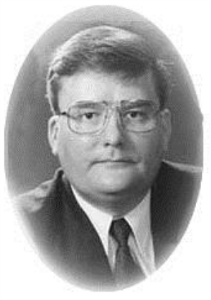 Korpan’s long political career began in 1984 when he was first elected to council as alderman. He brought to the job a solid education in municipal law and governance, a Bachelor of Law degree, and a degree in political science. When first elected he had been active in community organizations such as Nanaimo Homemakers Society. He served as chair of the Nanaimo Community Resource Board and chair of the Education and Skills Development Committee, and in his spare time, when not attending to his own law practice, he was vice-president of the Nanaimo Camera Club.
Korpan’s long political career began in 1984 when he was first elected to council as alderman. He brought to the job a solid education in municipal law and governance, a Bachelor of Law degree, and a degree in political science. When first elected he had been active in community organizations such as Nanaimo Homemakers Society. He served as chair of the Nanaimo Community Resource Board and chair of the Education and Skills Development Committee, and in his spare time, when not attending to his own law practice, he was vice-president of the Nanaimo Camera Club.He said he got into municipal politics when he saw a “divided and politically polarized council,” and thought Nanaimo voters deserved better representation, such as a “moderate, middle-of-the-road and independent candidate” like himself.
Korpan was born in Victoria in 1953, and moved to Nanaimo at age fourteen, with his parents Bill and Edna and brother Eric. He attended Woodlands, Nanaimo Senior Secondary School, and Malaspina College. He graduated in 1975 from the University of Victoria with a Political Science Degree. Nanaimo voters elected him five times as mayor.
His political career has focused on defending the city’s interest in dealing with senior governments, Crown and private companies, and in negotiations over the Snuneymuxw First Nations Treaty. While his legacy came to an end in the 2008 election to John Ruttan, he can point with pride to a new museum, downtown revitalization, a new library, a new aquatic centre, the Port Theatre, the Nanaimo Parkway, and the Vancouver Island Conference Centre. None were realized without controversy, but Korpan believed that working together would solve problems and ensure that Nanaimo moved ahead with confidence and improved quality of life.
Image courtesy of Nanaimo Community Archives
Biography courtesy of Jan Peterson “A Place in Time – Nanaimo Chronicles” -
John Ruttan (2008-2014)
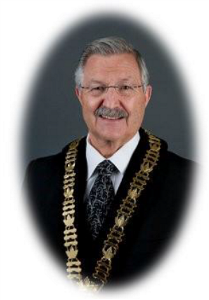 John Ruttan was born in Anchorage, Alaska and later moved with his parents to Victoria, B.C.. His mother was born in Nome, Alaska; his father in Manitoba. His ancestors were Loyalists from New York and New Jersey, who arrived from Lorraine, France in the 1600s, and settled in Hay Bay, Ontario. He was educated at Monterey Elementary School, Oak Bay High School and Victoria College. He has lived in the Nanaimo area for over 45 years.Ruttan has owned Nanaimo Travel and Cruise since 1980. He has also been president of Ruttan Holdings since 1993. In 2008 the Nanaimo Chamber of Commerce recognized Ruttan with the Sterling Community Award for "Citizen of the Year". He currently resides in Lantzville, British Columbia with his wife Dianne. They have two adult children.Ruttan noted that his greatest achievement during his two terms as mayor was the creation of the Nanaimo Economic Development Corporation, which focused on generating economic prosperity and making the City a more attractive place to invest.Biography adapted in part from Wikipedia
John Ruttan was born in Anchorage, Alaska and later moved with his parents to Victoria, B.C.. His mother was born in Nome, Alaska; his father in Manitoba. His ancestors were Loyalists from New York and New Jersey, who arrived from Lorraine, France in the 1600s, and settled in Hay Bay, Ontario. He was educated at Monterey Elementary School, Oak Bay High School and Victoria College. He has lived in the Nanaimo area for over 45 years.Ruttan has owned Nanaimo Travel and Cruise since 1980. He has also been president of Ruttan Holdings since 1993. In 2008 the Nanaimo Chamber of Commerce recognized Ruttan with the Sterling Community Award for "Citizen of the Year". He currently resides in Lantzville, British Columbia with his wife Dianne. They have two adult children.Ruttan noted that his greatest achievement during his two terms as mayor was the creation of the Nanaimo Economic Development Corporation, which focused on generating economic prosperity and making the City a more attractive place to invest.Biography adapted in part from Wikipedia
-
Bill McKay (2014-18)
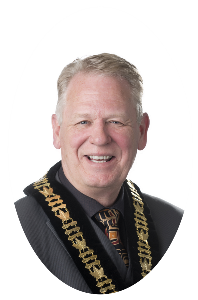 Bill McKay was born in 1955 and raised in North Vancouver. He grew up on the mainland, but spent many summers vacationing on Protection Island, where his family built a home in 1970. In 1982 he attended the Pacific Marine Training Institute and attained his First Mate and Captain’s certificates. This led to employment as a tugboat captain, a position he held for approximately 10 years. In 1993, he joined the Ministry of Transportation and served as Captain on the Albion Ferry. In 2000, Bill came ashore and was promoted to Manager of Operations and Personnel. In 2004, he accepted an offer for the same position at Nanaimo Harbour Link Corp, the operators of the high-speed passenger ferry “HarbourLynx”. With the closure of the HarbourLynx in 2006, Bill managed SignAge – a local leader in the display and visual services industry – until late July, 2014. Over the years, Bill also acquired extensive and diverse board experience, serving as a Director for Tourism Nanaimo, the Vancouver Island Raiders Football Club, the Sign Association of BC and the Nanaimo City Centre Association.In 2011, Bill was elected as a member of Nanaimo City Council, and then as Mayor on November 15, 2014. He served for one term until 2018, and as part of his mayoral duties was a director of the Regional District of Nanaimo, a member of the Island Coastal Economic Trust, and Vice Chair of the Island Corridor Foundation.
Bill McKay was born in 1955 and raised in North Vancouver. He grew up on the mainland, but spent many summers vacationing on Protection Island, where his family built a home in 1970. In 1982 he attended the Pacific Marine Training Institute and attained his First Mate and Captain’s certificates. This led to employment as a tugboat captain, a position he held for approximately 10 years. In 1993, he joined the Ministry of Transportation and served as Captain on the Albion Ferry. In 2000, Bill came ashore and was promoted to Manager of Operations and Personnel. In 2004, he accepted an offer for the same position at Nanaimo Harbour Link Corp, the operators of the high-speed passenger ferry “HarbourLynx”. With the closure of the HarbourLynx in 2006, Bill managed SignAge – a local leader in the display and visual services industry – until late July, 2014. Over the years, Bill also acquired extensive and diverse board experience, serving as a Director for Tourism Nanaimo, the Vancouver Island Raiders Football Club, the Sign Association of BC and the Nanaimo City Centre Association.In 2011, Bill was elected as a member of Nanaimo City Council, and then as Mayor on November 15, 2014. He served for one term until 2018, and as part of his mayoral duties was a director of the Regional District of Nanaimo, a member of the Island Coastal Economic Trust, and Vice Chair of the Island Corridor Foundation.
Last updated: July 9, 2025
Give feedback on accessibility. Submit your feedback through our online accessibility feedback form. Help us understand barriers people face when accessing City services.
You can attach files to help explain the barrier you faced in the form, like: a video, voice recording or photos. If American Sign Language (ASL) is the best way for you to communicate, upload a video of yourself using ASL into the form.
Please include: what you were trying to access, where the barrier happened, what the barrier was and any recommendations you might have.
Help us improve our website
IMPORTANT INFORMATION ABOUT PRIVACY AND YOUR PRESENTATION
- Information collected on this form is done so under the general authority of the Community Charter and Freedom of Information and Privacy Protection Act (FOIPPA), and is protected in accordance with FOIPPA. Personal information will only be used by authorized staff to fulfill the purpose for which it was originally collected, or for a use consistent with that purpose.
- Regular Council and Committee meetings that are open to the public are webcast using live-streaming video technology and may be recorded for video-on-demand access for subsequent viewing. By speaking at these meetings, you are consenting to disclosure of any personal information made evident through your speech or presentation materials, and acknowledging that this information may be disclosed and/or accessed outside of Canada. Personal information may include your image, name, address, and personal opinions. You are also asserting that your presentation is in compliance with the Federal Copyright Act, and grant the City of Nanaimo license to publish these materials. Individuals presenting to Council or Committees are requested to not disclose third-party information or it may be redacted.
-
Parks, Rec & Culture
- Recreation Facilities & Schedules
- Parks & Trails
- Activity Guide
- Events
- Register for a Program
- Drop-In Schedules
- Public Art
- Culture
- Poetry
-
City Services
- Garbage & Recycling
- Home & Property
- Water & Sewage
- Online Services
- Cemetery Services
- City Services Directory
-
Property & Development
- Urban Forestry
-
Building Permits
- Online Building Permit Application
- Building Permit Revision
-
Application for a Residential Building Permit
- Access (driveway) Permit
- Accessory Building Permit
- Alteration Permit
- Building Envelope Repair
- Carriage House
- Demolition Permit
- Fence or Retaining Wall Permit
- Geotechnical Reports
- Locate Permit
- New Construction Permit
- Plumbing or Services Permit
- Secondary Suite Permit
- Special Inspection Permit
- Swimming Pool Permit
- Woodstove Installation Info
- Green Home Initiatives
-
Apply for a Commercial Building Permit
- Access (driveway) Permit
- Commercial Alteration Permit
- Building Envelope Repair Permit
- Demolition Permit
- Fence or Retaining Wall Permit
- Geotechnical Reports
- Leasehold Improvement
- Locate Permit
- New Commercial Construction Permit
- Occupant Load Permit
- Signs Permit
- Special Inspection Permit
- Sprinkler Requirements
- Fees and Bonding
- Commercial Plumbing Permit
- Certified Professional Program
- Bylaws for Building
- Forms and Guidelines
- Book a Building Inspection
- Report Illegal Construction
- Request Building Plans
- Building Permit Statistics
- Permit Fee Calculator
- Building News and Alerts
- Fast Track Building Permits
- Development Applications
- What's Building in my Neighbourhood
- Development Activity Map
- Community Planning
- NanaimoMap
- Rebates
- Engineering Survey
- Land Use Bylaws
- Soil Removal and Depositing
- Heritage Buildings
- Sustainability
- Transportation & Mobility
-
Your Government
- Get Involved
- Government Services Guide
- News & Events
-
City Council
- Advocacy
- Contact Mayor & Council
- Council Meetings
-
Boards & Committees
- Advisory Committee on Accessibility and Inclusiveness
- Board of Variance
- Design Advisory Panel
- Finance and Audit Committee
- Governance and Priorities Committee
- Mayor's Leaders' Table
- Nanaimo Performing Arts Guild
- Parcel Tax Roll Review Panel
- Special District 68 Sports Field and Recreation Committee
- Public Safety Committee
- Understanding Council Committee Structures
- Council Policies
- Mayor's Office
- Council Initiatives
- Proclamations
- Bastion Lighting Requests
- Alternative Approval Process
- Budget & Finance
- Records, Information & Privacy
- Elections
- Contacts
- Careers
- Maps & Data
- Projects
- Tourism Nanaimo
- Grants
- Awards
- Accessibility & Inclusion
-
Doing Business
- Economic Development
- Doing Business with the City
- Business Licences
- Filming in Nanaimo
- City Owned Property
- Encroachments onto City Property
- Liquor Licences
- Cannabis Retail
- Business Improvement Areas
- Procurement Services
- About Nanaimo
- Green Initiatives
-
Public Safety
- Public Safety Contacts
- Nanaimo Fire Rescue
- Emergency Management
- Police & Crime Prevention
- City Bylaws
- Community Safety and Wellbeing
- Emergency Services

